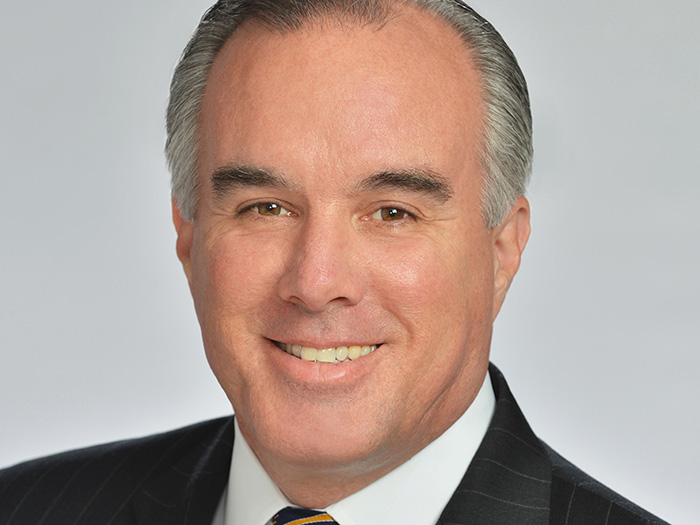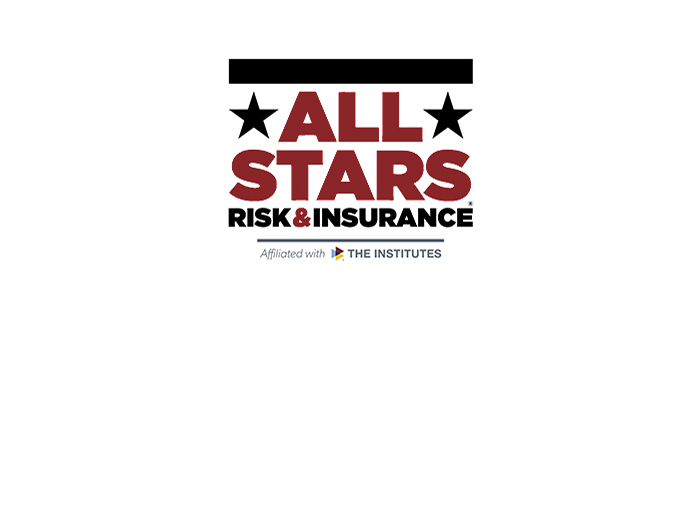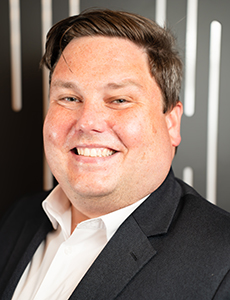11 Questions for EPIC’s Steve Nelson

In late February, EPIC Insurance Brokers and Consultants announced the appointment of Steve Nelson as chief growth officer for its private client practice.
Risk & Insurance® caught up with Nelson soon after to get his take on his aspirations for this new position.
What follows is a transcript of that discussion, edited for length and clarity.
Risk & Insurance: Can you tell us a little bit about your background?
Steve Nelson: Sure. I have been in the industry just over 33 years. I started right out of college, building my own brokerage in Baltimore, Maryland. Grew that for about 12 years, then sold it.
I was a financial advisor for three years with Merrill Lynch through which 9/11 happened. The stock market was so challenging that people were asking me if I could purchase gold bars for them instead of stocks.
While I was a financial advisor for a short period of time, I learned a great deal during those three years.
I was extremely lucky to have wonderful experiences as a private client insurance advisor within two fantastic global financial institutions, J.P. Morgan Private Bank and HSBC Private Bank.
During both of those experiences, I was the rainmaker, working with private bankers as part of their teams and developing and retaining clients, which were typically large families.
Next was an equity opportunity with regional firm Cook Maran & Associates out of the New York Metro area, in 2017. I was building a client book and helping them grow out their private client platform, Countrywide.
Late fall of 2019, we experienced a fortuitous situation. EPIC Insurance Brokers agreed to purchase Prime Risk Partners, which owned Cook Maran.
It was fortuitous not just because they’re a great firm, but also because they were looking for more intellectual capital on the private client side. Tim Brenneman, the national head of Cook Maran’s private client team became the national private client head at EPIC Insurance Brokers.
Recently, I agreed to enhance this opportunity to grow out the EPIC Private Client Platform by becoming the chief growth officer.
R&I: Can you help us understand the size of the private client team at EPIC?
SN: Right now, our Private Client Platform has approximately 140 people nationally operating out of 25 offices. I say approximately, because we are growing rapidly in headcount.
While we are busy solidifying our national private client platform, that’s not really the full story. Many of our legacy teams have been around and functioning at a high level for over 25 years. So it’s kind of the lion behind everything that is roaring pretty loudly now, and we’re just enhancing it nationally.
Right now we place about $300 million in private client premiums nationally. And year over year, we experienced net growth of about 4%.
R&I: Do you have any idea how the size of your team stacks up nationally?
SN: I would say we are probably somewhere in the top 15, closer to top 10, in size of private client book.
We have a nice balance of being stealthy and able to pivot if necessary while maintaining really strong insurance carrier relationships countrywide with global capabilities.
R&I: The pandemic has changed many things. What impact would you say it’s had in the work you do with your private clients?
SN: Change is always inevitable, right? Managing change effectively and efficiently allows you get back up when you suffer a setback.
And we have seen setbacks and challenges with COVID, and we have lost family members. It has been extremely tough. That’s always going to be the way of the world.
I’m super proud that our team endures, and I have seen them gain strength through this difficult time. We are extremely fortunate that EPIC was so nimble and pivoted immediately to support a remote working environment.
For example, while our teams transitioned back in March of 2020 to virtual workspaces in a two-week period, the need for service and guidance from our clients ratcheted up about fivefold.
It was the perfect storm.
Our teams not only responded incredibly well to the challenge, but they also viewed this as the perfect opportunity to deepen client relationships.
We are now full steam ahead, and hiring intellectual private client talent to execute on all of the new client opportunities is top priority.
R&I: What drove that fivefold increase, as you described it, in the services that clients were asking for?
SN: Clients found themselves at home and were taking more time to be personally diligent.
Additionally, we had massive change with the real estate markets. We were already seeing change with client movement to certain states for tax reasons. COVID sped that up dramatically.
People were making decisions. People were realizing, “I want to work in a place that’s more beautiful than where I am now. I don’t want to be trapped in the city,” and so on and so on.
We witnessed changes in waves in periods of a month or two.
First there was a pause, then new homes were rapidly purchased, followed by purchases of old homes to be renovated, and then purchases of raw land.
R&I: I was thinking about an executive who was, before COVID, sitting in their office in Manhattan and then, after COVID, at home. It creates a security issue. Would that fall more on the company’s insurance instead of shifting to the private client side?
SN: I think it’s both. I think both sides were looked at and reevaluated. Family offices were coming to us and looking for more frequent reevaluations of insurance portfolios, even on the personal side, checking in.
We also saw a lot of change with family offices. So we saw a lot of clients who may be working at a larger multi-family office deciding to break out and planning to open their own private family office.
All of that required change and new contacts and reevaluation.
That activity increased dramatically. C-suite executives, ultra-high net-worth individuals and family offices were taking time to reevaluate everything and the personal insurance lines were not overlooked by any means.
R&I: There was historically a lot of appetite on the part of carriers for cyber, but now there’s pull back. What’s that environment like from the private client perspective?
SN: From the cyber perspective, the real protection is found by clients right now through endorsing home insurance policies. We are seeing the development of individual standalone cyber products out of London and non-admitted markets.
We’ve engaged directly with different technology companies to see if we could develop our own products. And that remains an active and ongoing conversation.
Generally, the endorsements are good, and they are reasonably priced, and to a large degree, it’s a no-brainer purchase, those endorsements.
However, we’ve also consulted with many top cyber experts, who say that’s nice to have that insurance contract to fall back on, but you also need to be investing real dollars in a preventative approach.
That monitoring service, that security service — that is the key. You need that on the frontline and should not rely upon just an endorsement on an insurance policy.
Insurance carriers continue to increase and evolve their coverage terms. However, the criminals and the perpetrators are still ahead of the game.
So naturally everybody is falling behind that, which is why you see massive investment into that sector.
R&I: What are three prominent risks in the private client sector that you think should be top of mind for clients or insurers or their partners?
SN: Personal liability and personal excess/umbrella liability is the hot button, especially if you, as a client, have any exposure to the United States.
I also work with several international clients that require an education on the litigious nature of living in the United States. It can be critically important to understand the litigious nature of living in or owning property in the United States.
We address this important issue by providing an initial comprehensive review of a perspective client’s personal risk portfolio. An important part of the review touches on their need or their potential need for personal excess liability coverage. Including the question of, “How much coverage do I need?”
Many advisors will answer that question with, “The benchmark is your personal net worth.” However, there are many more factors that influence this answer, and we make sure to discuss those factors.
The second prominent risk is property insurance. With the weather patterns rapidly changing, catastrophic property damage is increasing exponentially year over year.
The wildfires in California are now spreading in frequency into Oregon, Washington State, Nevada, Colorado and other western states. Earthquake remains a significant risk.
Hurricane risk remains high on the panhandle and East Coast.
Flood risk will continue to grow as water tables rise. Even if you are in a low risk “X” flood zone, I strongly recommend the consideration of flood insurance. Almost a third of flood claims each year tend to happen in “X” flood zones.
Then you have little microcosms of just crazy catastrophic loss, not expected. The great freeze last March in the Dallas and Austin, Texas area was a significant loss, multiple billions of dollars.
A third, I would say right now that the thing that is most visible in the press from COVID, is auto pricing. Auto insurance pricing based upon usage or extreme lack of usage and that continues to evolve. And I think we’ll see that continue to evolve.
R&I: Are we seeing the impact on personal excess liability that we’re seeing in general liability in commercial insurance where these nuclear verdicts and social inflation are really jacking up loss?
SN: I don’t think we’re seeing that. I think the issue on the personal side is just clients are not paying enough close attention to their need.
Our solution is the comprehensive review.
Quite frankly, we look at that as a constant opportunity to educate clients, and many times it’s fascinating to me how a client who’s worth $35, $45 million comes to us with a $5 million personal umbrella liability policy. The economics of increasing the coverage and the small pricing deltas make increasing the premium a no brainer.
We continue our review process with clients on an annual basis.
R&I: We touched briefly on cyber and property. Are there any significant carrier appetite or exclusion trends readerS should be aware of?
SN: Appetite in the property markets is constantly evolving and changing, because we’ve seen some major carriers moving completely out of California and insurance carriers in Florida going insolvent. We continue to watch both situations very closely.
Secondly, with special contingency insurance coverage (kidnap, ransom, extortion), cyber extortion was traditionally included in that London contract. In recent year, the peril of “cyber extortion” has been excluded on the policy contract.
This has been a challenge for our clients, because the standalone cyber markets have been taking time to develop.
Cyber extortion is one risk that needs to be looked at very closely regarding special contingency insurance contracts.
R&I: As you look at the client base and the needs of the market, are there any new products you envision coming down the pipe that we want to keep an eye out for?
SN: I think it’s more a matter of a closer look at the current products and how they are evolving rapidly.
For example, in California, most carriers are starting to enact a significantly higher deductible for wildfire loss. It remains important to pay close attention to policy renewal offers in this regard. &











